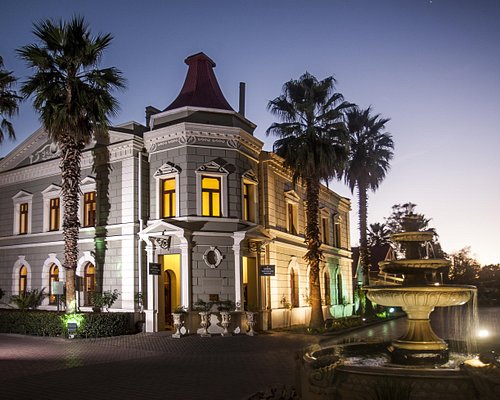Johannesburg North Attractions Fundamentals Explained
Johannesburg North Attractions Fundamentals Explained
Blog Article
What Does Johannesburg North Attractions Do?
Table of ContentsJohannesburg North Attractions - TruthsThe Only Guide to Johannesburg North AttractionsThe Only Guide to Johannesburg North AttractionsThe Buzz on Johannesburg North AttractionsThe Ultimate Guide To Johannesburg North AttractionsThe Greatest Guide To Johannesburg North Attractions
The city owes its place to the visibility of a much more precious resource: gold. The city grew on the edge of the Witwatersrand Key Coral reef, a subterranean stratum of gold-bearing quartz-silica corporation that arcs for hundreds of miles under the Highveld. The majority of the gold mines in the city discontinued operation in the 1970s, but in its day the Witwatersrand gold industry represented greater than 40 percent of the globe's annual gold manufacturing.Johannesburg has a warm environment. Summer temperatures balance about 75 F (24 C); winter months temperature levels average about 55 F (13 C) and just sometimes dip listed below cold. The city enjoys about 8 hours of sunshine daily in both wintertime and summer season. Rainfall standards concerning 28 inches (700 millimetres) per year, however the overall differs significantly from year to year.
What rainfall the city receives falls virtually specifically in the summer months, usually in spectacular late-afternoon electrical storms., where several residents still count on coal for gas.

Johannesburg North Attractions Can Be Fun For Everyone
The equilibrium of the city is occupied by whites. Holiday accommodation varies in character and quality.
Physical development, although somewhat restricted by transport, continued rapidly as immigration to South Africa, and Johannesburg specifically, raised dramatically. This trouble was resolved in the 1930s when the automobile was introduced in mass manufacturing to South Africa. Cars were, essentially, confined to the rich, and permitted them to move to the north of the city and commute right into the centre.
The majority of bad residential areas were combined, with inadequate blacks and whites living together, although the wealthy suburban areas were normally reserved for whites. This changed with the political election of the National Event in the 1948 elections, that started to formalise the system referred to as racism. Racism formally marked which suburbs each race can reside in under the Team Locations Act.
The previous system of eleven phoned number regions was reorganised in 2006. Marshalltown, as seen from the top of the Carlton Centre. The M1 and M2 run behind the buildings, and the southerly suburban areas expand like it past the freeway border. The internal city of Johannesburg is situated within the city's Region F. The estimated populace of the region is 200,000, [] The number of people living in the internal city on an informal basis is unidentified, as lots of are prohibited immigrants. A lot of higher-income residents and white individuals have actually relocated to the north residential areas and have actually been replaced by lower-income black individuals. The joblessness, education and learning, and age profiles of the location are all unidentified, due to the problem of acquiring reputable information regarding the location.
See This Report about Johannesburg North Attractions
Centred on the CBD, the area consists of the suburbs of Yeoville, Bellevue, Troyeville, Jeppestown, and Berea to the eastern. To the west it spreads out to Pageview (Johannesburg North attractions) and Fordsburg. There are little industrial parks to the south, such as City West-Denver and Benrose. Around 800,000 commuters travel through the internal city everyday, and it functions as a regional purchasing node for site visitors from the southerly residential areas. Yeoville and Bellevue have a mix of house structures and solitary residential units on small great deals. The region is located on a hilly divide that runs from east to west.

Some Known Details About Johannesburg North Attractions
R. Tambo International Airport). The eastern suburbs are a few of the oldest locations of Johannesburg, there are huge neighborhoods of look at this website Jewish and various other European histories, the bulk of the population is English talking. There are three fairway as well as a variety of secured ridges with viewsites. There are numerous well-developed and up-market entertainment and purchasing locations in the east such as the Eastgate Shopping Center and the Greenstone mall.
Initially constructed to house male migrant employees, numerous have been enhanced as dwellings for pairs and households. The suburban area was not traditionally enabled to develop work centres within the area, so virtually all of its locals are commuters to other components of the city.
Johannesburg North Attractions Fundamentals Explained
The N1 Western Bypass connects the north suburban areas with the north-western suburban areas. The suburbs in the north suburbs are primarily official, without significant locations of casual real estate, or real estate that does not have an irreversible structure. This is an established area, there is a trend of land use adjustment from residential to business, particularly along primary arterial roads and around established nodes.
The location is well connected to roadway networks, like this specifically along the north-south axis created by the M1 and N1. Roadways to the eastern and west are much less well established, as there are no freeways taking a trip in that instructions. In the direction of the north border of the city, the density of growth decreases, leaving big locations of primitive land around Midrand.
Johannesburg North Attractions Can Be Fun For Anyone
The very first residential area to the north of the inner city is Parktown, which is situated on a hill ignoring the central city and Hillbrow. It has numerous well-off citizens and Edwardian-design manors, as well as the Education and learning and Medical universities of the College of the Witwatersrand. The huge concrete Charlotte Maxeke Johannesburg Academic Health Center dominates the sky line of Parktown.
Report this page